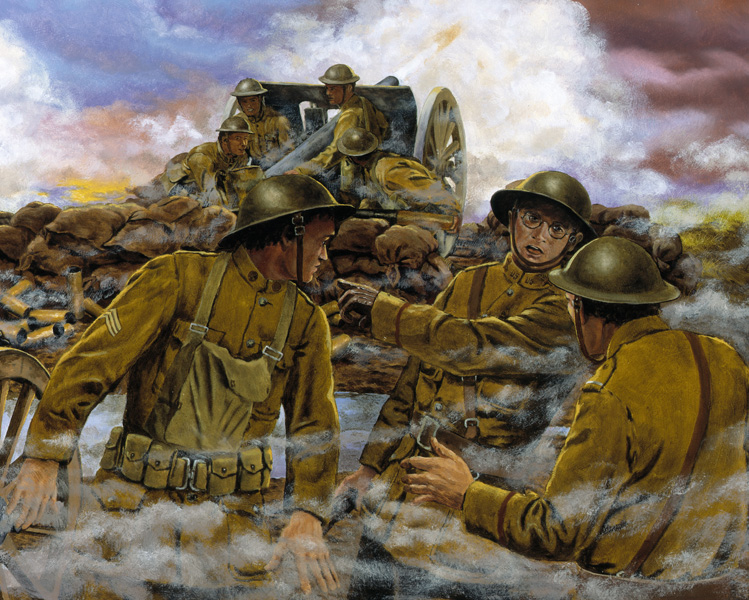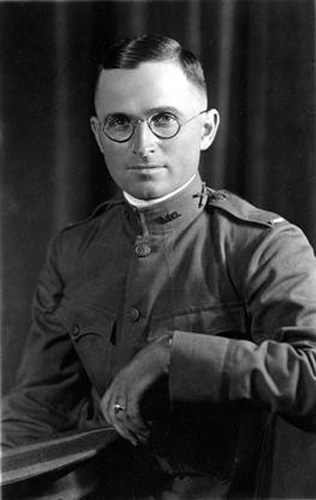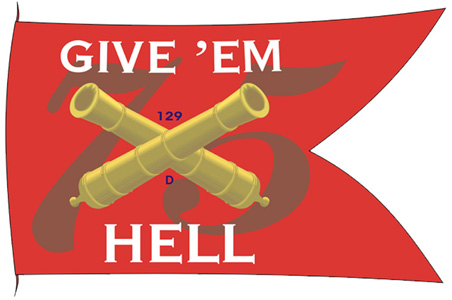Morgan Munitions – Give ‘em an Artillery Shell from Morgan, Harry

“Truman’s Battery” by Dominic D’Andrea. Captain Harry Truman in Action with Battery D in France During World War I. Art Work Courtesy of the National Guard Heritage Series Web Site NG.mil.
This write-up, originally written in conjunction with a series of write-ups affiliated with the unique World War I Victory Lamp, was originally posted on the same day the United States buried its last surviving veteran of World War I, Army Corporal Frank W. Buckles. Thank you to Corporal Buckles and the other now deceased 4.7 million US veterans of World War I. Your participation in “The Great War” was the deciding factor in ending what was at the time the most catastrophic event in world history. Sadly, it didn’t keep that statistic.
Suffice it to say that if Harry Truman didn’t eventually become the most famous individual ever to have fired a French “75” field gun – almost certainly using shells loaded in Morgan, NJ – he certainly eventually became the most powerful person to have ever fired one. During World War I, Harry S. Truman, the 33rd President of the United States, was Captain Harry S. Truman, Commander of Battery D, 129th Field Artillery Regiment, 60th Brigade, 35th Division, Kansas and Missouri National Guards.

First Lieutenant Harry S. Truman during World War I – September 1917. Photo Courtesy of the Harry S. Truman Library and Museum in Independence, Missouri.
According to a letter written to his future wife Bess, First Lieutenant Harry Truman landed in Europe as a member of the Allied Expeditionary Force (AEF) on April 14, 1918. Due to war time censorship, at the time he could not tell Bess where he was. In actuality, he wrote that letter while at the Hotel des Voygers in the French port city of Brest. Truman, along with seven thousand other troops, sailed out of New York City during the night of March 29, 1918 onboard the Army Transport ship George Washington, a 722.5 foot long, 36,000 ton confiscated German luxury liner originally named the S. S. Catlin. No one on the ship knew exactly when – or if – they would be coming home again.
After five weeks of intensive artillery schooling on the Great French “75” field gun (see the to-be-reposted write-up) in Chaumont, in Lorraine, 500 miles east of Brest, Truman traveled to Angers to meet up with his regiment, the 129th, which was now in France. It was here that 1st Lieutenant Truman learned that he had been promoted to Captain a few months earlier but had never been told. In the beginning of July, Truman and the 129th traveled for final training at CampCoëtquidan, near Rennes. Another surprise awaited Truman here when he learned that in addition to now being a Captain, he was also to be the commander of Battery D, a battery with four “75” guns, 160+ horses and 194 men. For the next month, Captain Truman taught his men everything he had learned at artillery school and thoroughly drilled them until Battery D went from being considered the worst battery in the regiment to among the best. On August 17, the entire 129th Regiment moved by train to the eastern front lines to the town of Saulxures in the Vosges Mountains in Alsace – just north of Switzerland and just west of Germany. At 8pm on August 29, Battery D fired their four French 75’s on the enemy for the first time in hills near the village of Kruth. Of the three types of shells available for this 75mm field gun, High Explosive, Shrapnel or Poison Gas, Battery D fired five hundred rounds of 75mm poison gas shells. Note, I don’t have any information which indicates that poison gas shells were produced at the Morgan based T. A. Gillespie Loading Company.
In the early hours of September 3rd, the regiment started moving north. Another train ride and many wet evening marches ultimately brought the regiment to an area south of Verdun near Saint-Mihiel. This was to be for a short time however for orders were received during the evening of September 16 to move the regiment another 100 miles north west to the Argonne Forest.
By September 22, Truman and his Battery D arrived close to a village by the name of Neuvilly in north eastern France, near the France/Belgium/Luxembourg border, in preparation for what was ultimately to become the last major battle of World War I. After three days of preparation, the big show started on September 26 at 4:20 A.M. when 2,700 field guns started firing – including Truman’s four 75’s. According to historian David McCullough, “In three hours more ammunition was expended than during the entire Civil War – and at an estimated cost of a million dollars per minute.” Truman’s four guns were firing at the rate of 30 rounds per minute (one every two seconds) and per Truman, “My guns were so hot that they would boil [the] wet gunnysacks we put on them to keep them cool.”
For the next two and a half weeks, Truman and Battery D moved to various locations including the area around Cheppy, and east of Verdun as the AEF helped bring an end to the war. At about 8:30 in the morning of November 11, Truman received an important message from headquarters indicating that in two and a half hours, it would all be over. The Germans signed an armistice agreement. Battery D fired its last shell at 10:45 A.M. toward a little village called Herméville.
And with that, on the eleventh hour of the eleventh day of the eleventh month, all shooting stopped.
Harry S. Truman was in Europe for just under one year when he sailed back to New York on April 9, 1919 on the USS Zeppelin. The USS Zeppelin was another former German liner, originally named the SS Zeppelin, which was part of the war reparations Germany had to make to the United Kingdom at the end of the conflict.
According to Captain Harry S. Truman, during their time in the war, Battery D fired 10,000 to 12,000 shells at the Germans. Who knows how many of these shells were loaded at the T. A. Gillespie Loading Company of Morgan, NJ.
Well after Harry Truman’s death on December 26, 1972 at age 88, the United States Navy commissioned the eighth Nimitz class aircraft carrier in the name of Harry S. Truman on July 25, 1998. Even more symbolic is the number of the ship CVN-75. “C” stands for aircraft carrier. “V” stands for fixed wing aircraft and “N” stands for nuclear powered. Most interesting is that the Navy was able to utilize the number “75” (75th aircraft carrier of the US Navy – except for CV 35 which was never finished). The Battle Flag of the USS Harry S. Truman incorporates a number of features including the number 75 and crossed French 75 cannons. You can read more detail about the symbology of the Battle Flag of the USS Harry S. Truman here.
First posted on March 15, 2011.

Outstanding stuff. Good man. He had to show us the use of the bomb to show us not to use it, or we may have had a major nuclear war by now I think. You put out good stock, Morgan! good luck from southwest Canada along the sea.